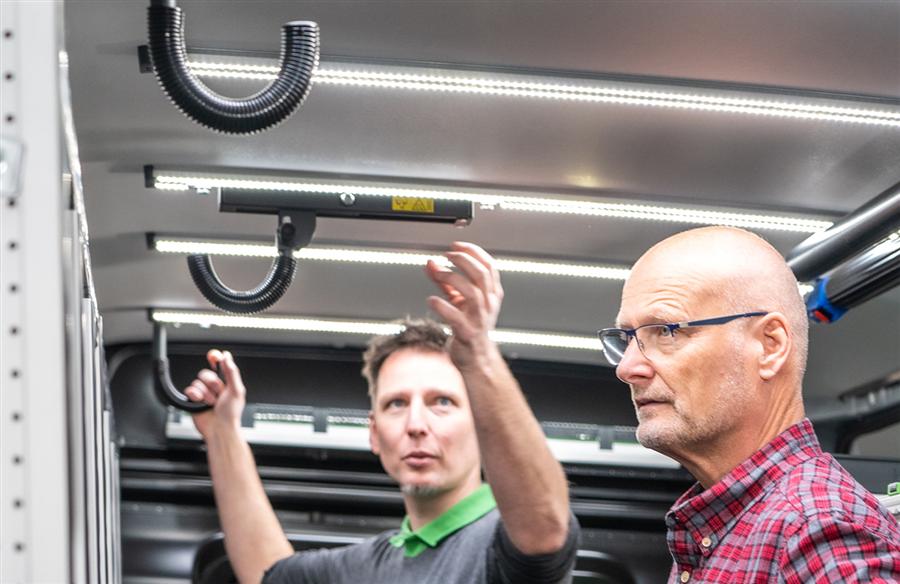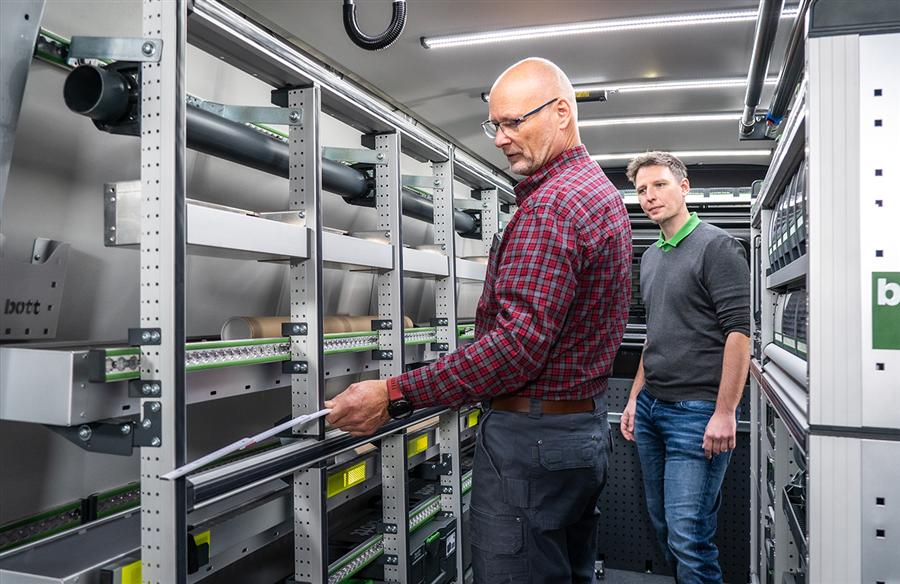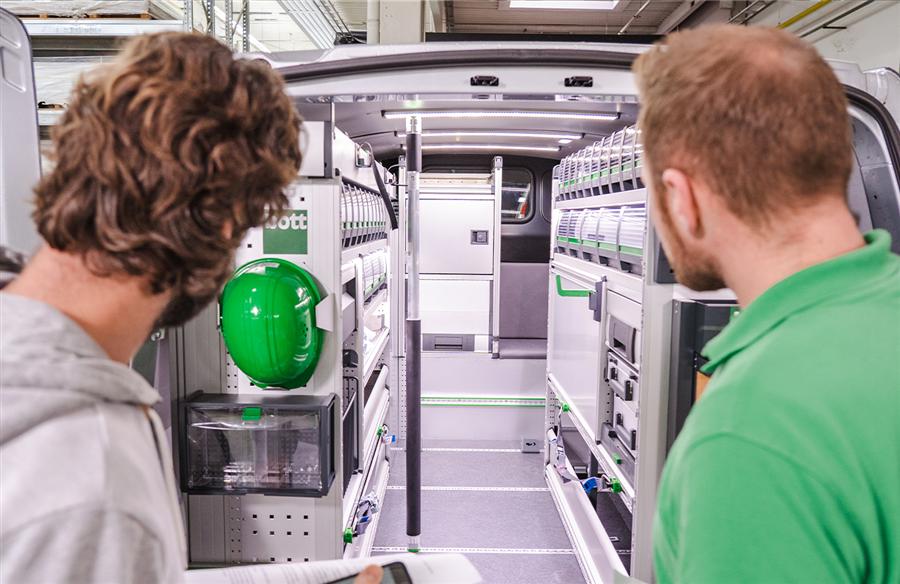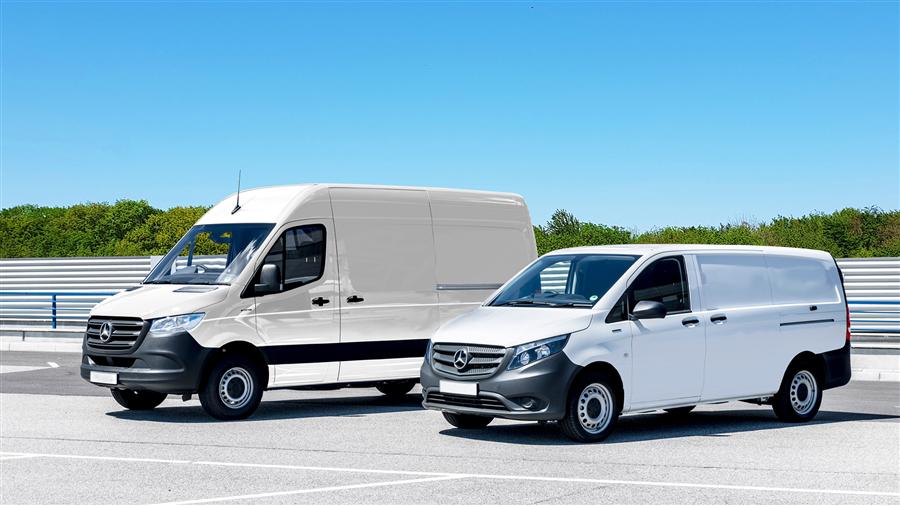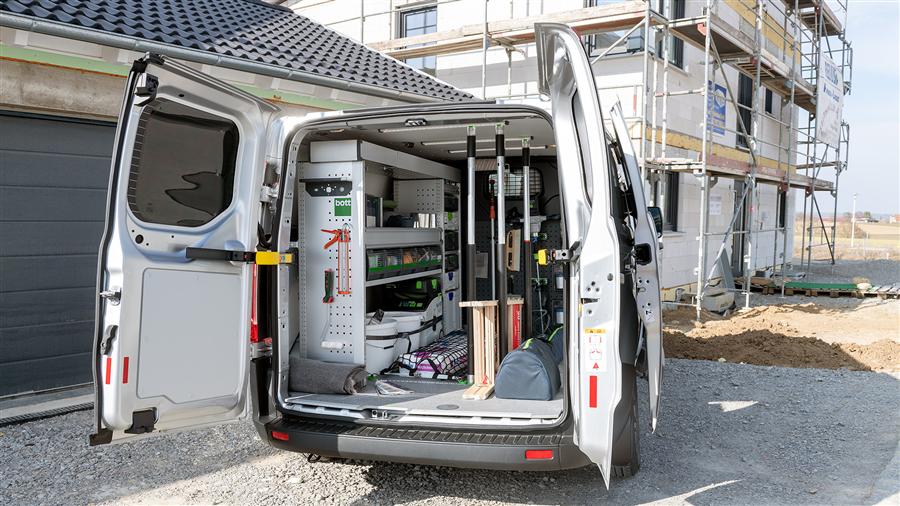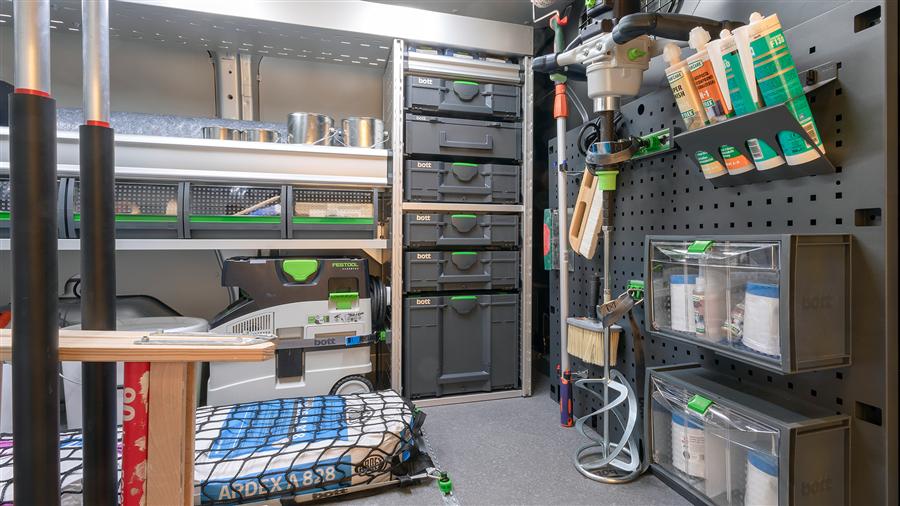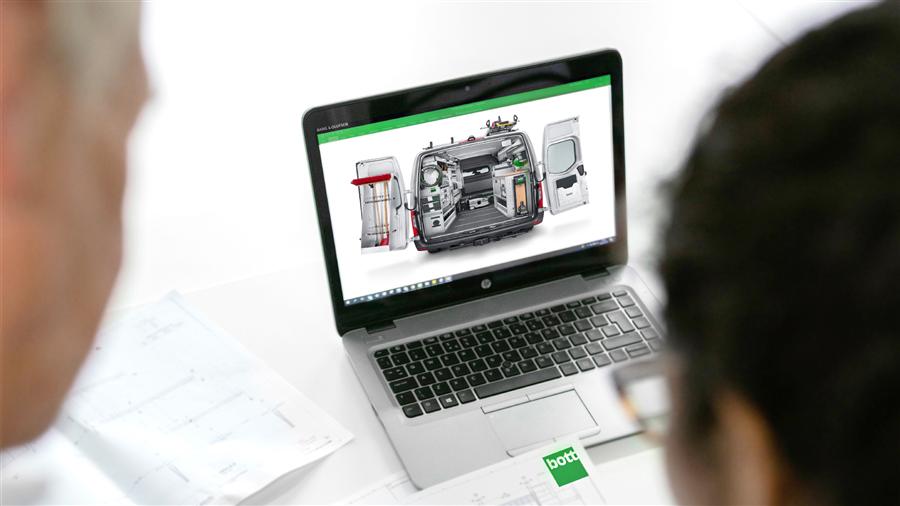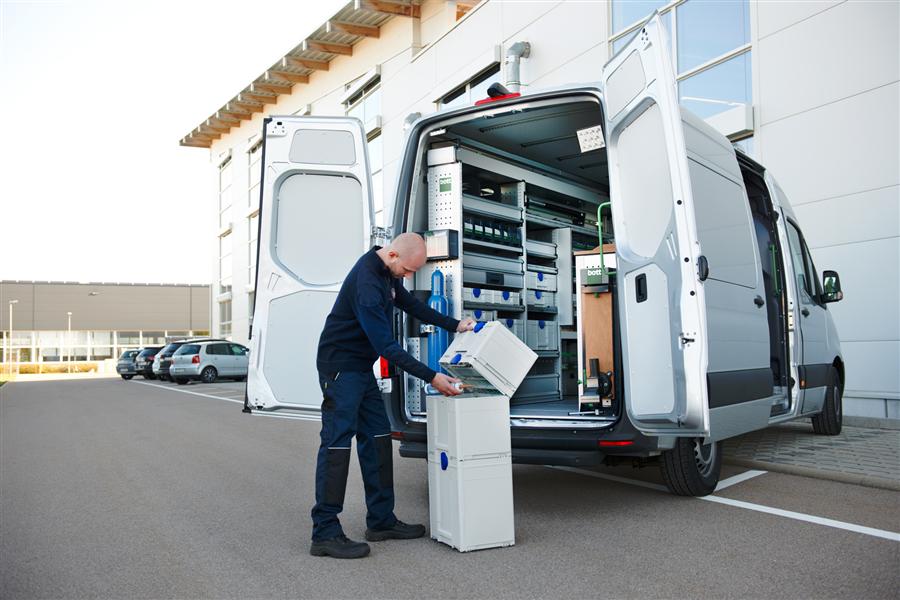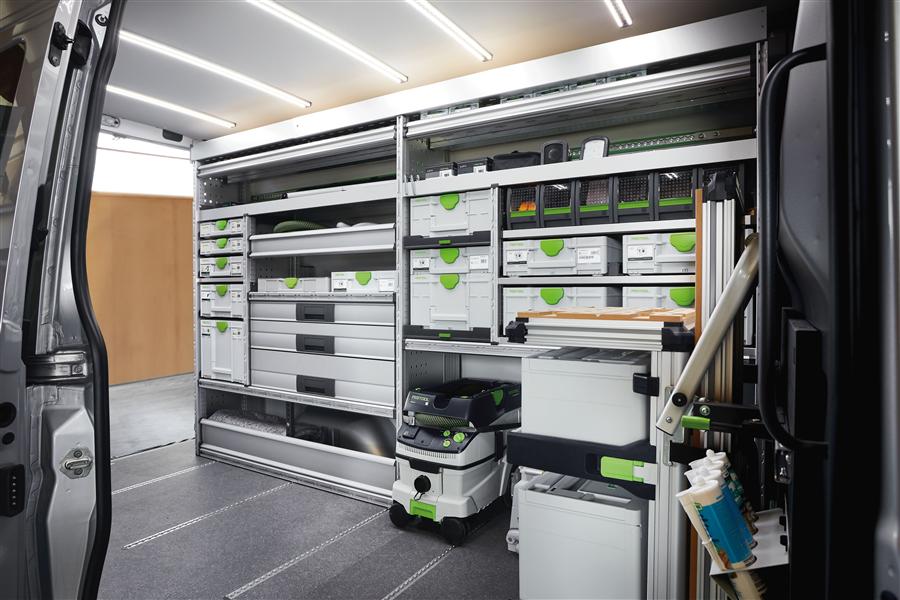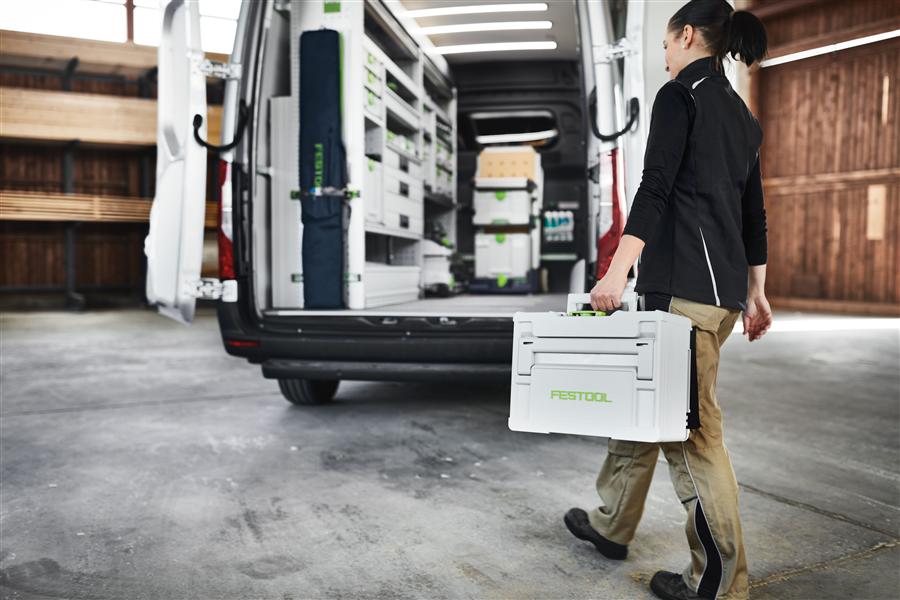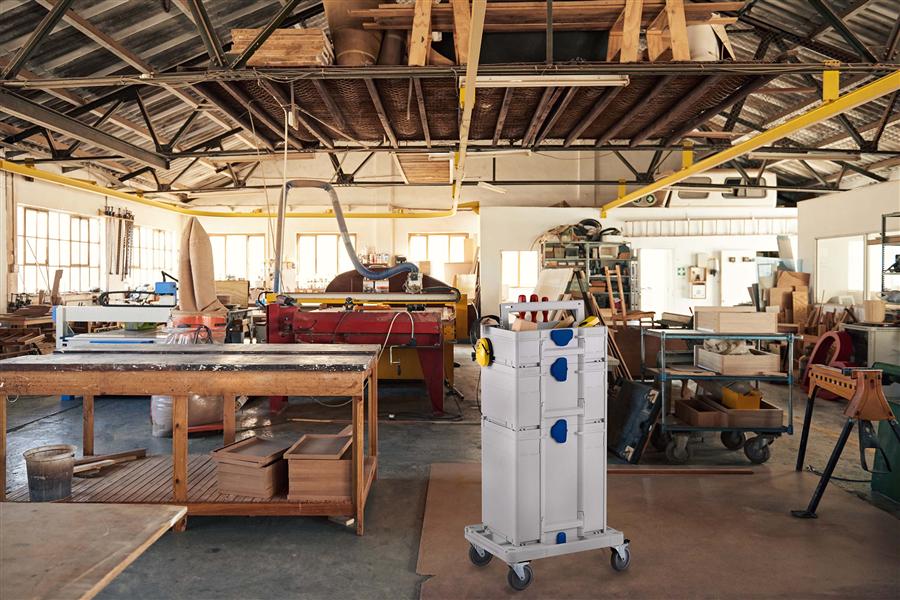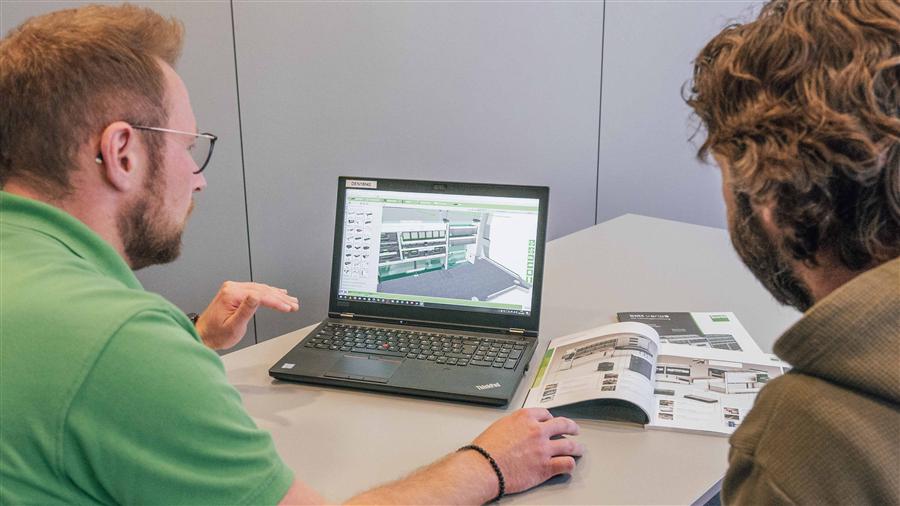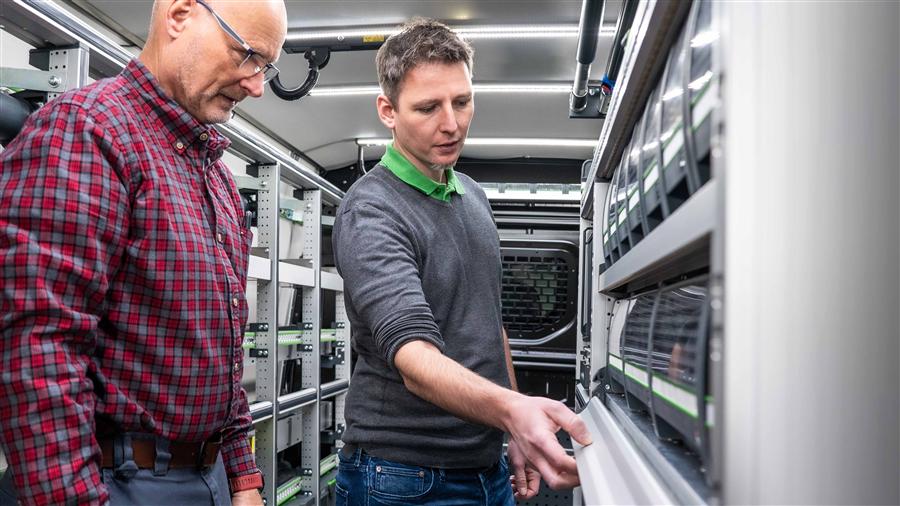Performance improvement through quality
Why buy a professional organization system?
Customization
As a tradesperson, you will have your own system of organising tools and materials. But those who employ workarounds and temporary solutions may already have noticed: Only a professionally equipped vehicle can use the available space efficiently and optimise the weight distribution.Working efficiently
Whether you are looking for the right tool on the road or on site, carefully planned out vehicle shelving saves time, effort – and above all frustration. Speedy loading and unloading, a good overview of the available tools and materials, and of course the safe and legally compliant transport of goods is guaranteed when using verified professional systems. It also looks a lot more professional to customers and colleagues alike when you don't have to spend a long time looking for the right tool every time.Our system concept
For this reason, many tradespeople rely on a professional organisation system such as vehicle shelving with suitable storage boxes and system cases. Because so many products are available for all kinds of vehicle model, this immediately raises the question: Where do I even start?
